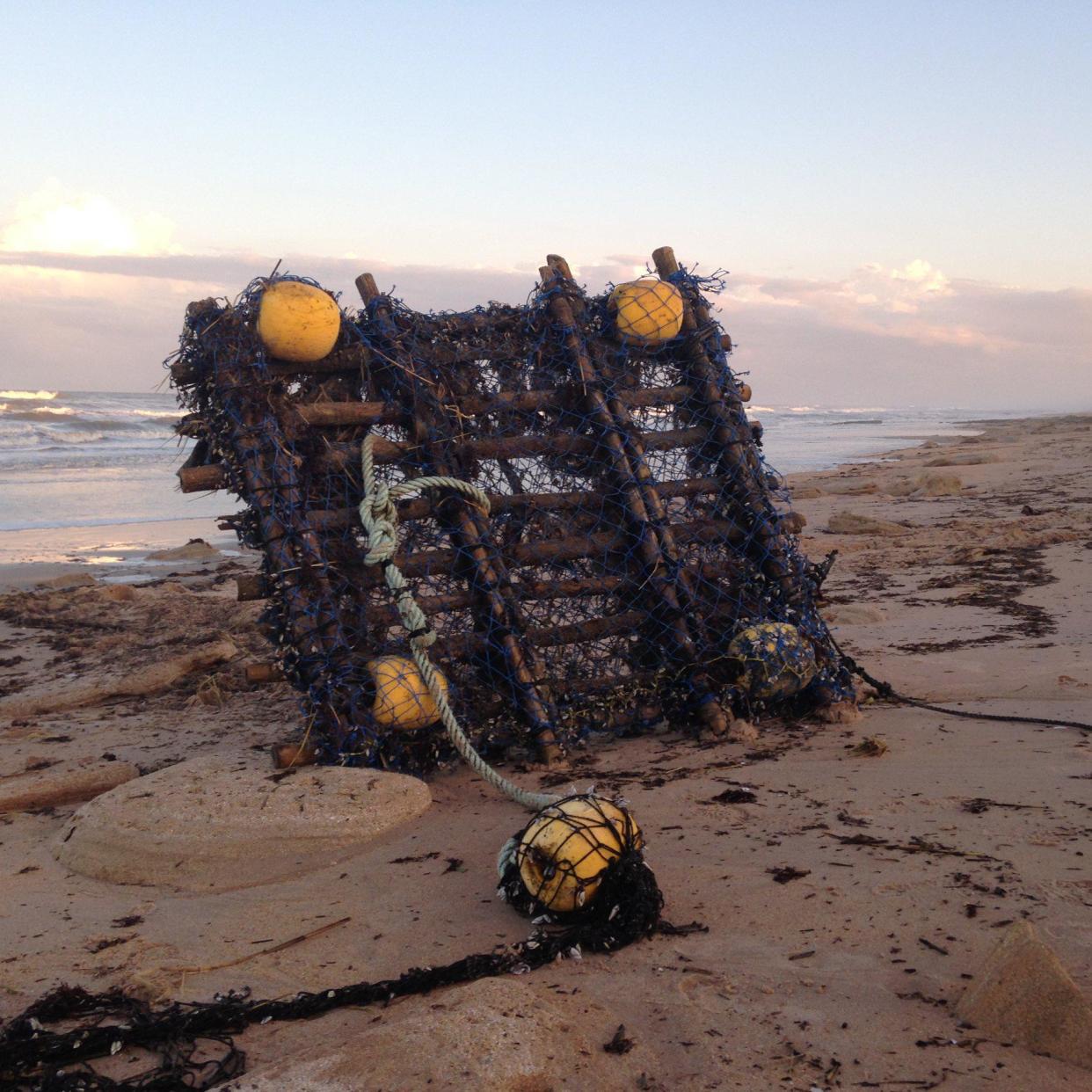These mysterious 'devices' keep washing up on Florida’s beaches. Scientists are concerned.

PALM BEACH, Fla. – Makeshift contraptions for catching sea life off West Africa are landing on Florida beaches like hobo fishermen, drowning turtles and bashing coral heads in a current-driven journey across the tropical Atlantic.
Called “drifting fish aggregating devices,” or FADs, the sometimes raft-like structures can get sucked into the North Equatorial Current and travel as far as the Caribbean, Gulf of Mexico and Florida. One was found on Palm Beach this month.
Often made from refuse – oil jugs or bamboo sticks lashed together – curtains of netting dangle beneath them with a reach that can be more than 300 feet deep. They attract fish that gather for shelter or to feed on whatever grows in the artificially created ecosystem.
The bump of Palm Beach County’s coastline makes it a hot spot for FADs if they get caught in the Gulf Stream, said Florida Fish and Wildlife Conservation Commission biologist Thomas Pitchford.
“The presence of these things around the Caribbean is starting to get more attention,” said David Kerstetter, an associate professor with Nova Southeastern University’s Department of Marine and Environmental Sciences. “Things like sea turtles can get entangled in them and the other concern when they break free is all that netting and other material smashes into coral reefs.”
Wayward FADs have been an issue for years as their use grows with better tracking technology. More sophisticated devices have solar-powered beacons and sonar systems so fishermen can see if there are fish underneath them before making a trek to where the device is floating.
Fish under the device are gathered by a “purse seine” – a large wall of netting that encircles an entire area or school of fish with a line that can close the net at the bottom.
Adult tuna, billfish and dolphinfish are the target catch for the FADs, but juvenile fish, sharks and other species also can get caught up in the catch.
The Pew Charitable Trust estimated that 81,000 to 121,000 FADS were deployed in 2013.
“Legal ownership is often unclear, in part, because vessels fish on any FAD they find, whether they deployed it or encountered it by chance,” a Pew report notes. “As a result, fishermen often treat FADs as disposable, so they wash up on beaches and coral reefs and contribute to plastic pollution.”
Diane Buhler, founder of Friends of Palm Beach, said her beach cleaners have found pieces of the devices for years but didn’t know what they were until 2019 when a large, intact plastic FAD was found.
“If they get degraded or if they’ve already cracked into a couple of reefs, it just looks like a pile of trash,” said Kerstetter.
In Florida: 6-year-old arrested by cop tearfully asks for second chance in body cam footage
First brought to Florida for tourism: Herpes-carrying monkeys may multiply out of control
The recent device, which was made of bamboo, was spotted on the north end of Palm Beach on Feb. 22 and posted to social media by WPTV Channel 5 meteorologist James Wieland.
Kerstetter and graduate student Erin Kimak are collecting information on where lost FADS are landing as part of the Caribbean FAD Tracking Project.
Through reports of strandings and online searches, 191 FADs have been reported in the northwestern Atlantic, with outliers in the Azores, Brazil, Ireland and Scotland. The first report dates back to 1999.
Ten FADs have been reported on Palm Beach since 2013. Statewide, 63 devices have been reported, with the first in Jensen Beach in 1999.
Kerstetter said he hopes to identify which fisheries are losing the most devices.
“If we can figure out who is deploying them we can try to get them to stop putting so much garbage and plastic out in the ocean,” he said. “It’s a complex problem.”
Follow Kimberly Miller on Twitter: @KMillerWeather
This article originally appeared on Palm Beach Post: Florida beaches are dealing with FADs. Scientists are worried

